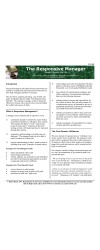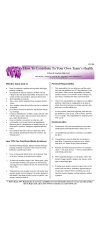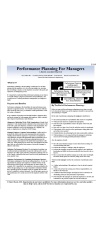By Gayle Oudeh and Nabil Oudeh
Editor’s Note: Pleased to publish this piece, since I’ve seen Nabil work, and he’s certainly a talented and knowledgeable facilitator and trainer related to many conflict issues. In this article, the authors deal with the concept of the “hostile work environment. One important takeaway from this article is that the earlier you deal with workplace conflict, the more likely you will prevent it from escalating into polarized conflict.
Not all conflict is negative. Conflict, when understood as a difference of wants, needs, or expectations, can be the catalyst for new discoveries, innovative collaborations, and unique solutions to seemingly insurmountable problems.
While conflict has the potential for promoting creativity and innovation, it is also a significant contributing factor to low workplace morale, employee disengagement, stress, and physical illness. Left unaddressed, conflict can have a devastating effect on the work environment.
Knowing when to intervene is the key to minimizing the negative effects of conflict and maximizing its positive potential.
Conflict, at its very beginning, is at the productive stage. Although individuals may have a difference of opinion about a situation or issue, when those differences are shared and discussed, there is opportunity for new insights, greater understanding, and dynamic solutions. At this point, conflict can be productive. But there are two requirements of the individuals involved in the conflict – they must be willing to address the issue and they must be able to talk with one another.
When conflict remains at this productive stage, intervention by a third party is not required. The disputants themselves will work together to find an acceptable solution.
When, however, the parties are either not willing to address the conflict or are unable to talk together, the conflict is likely to escalate to the personalized stage. At this stage, the parties involved in the conflict lose sight of the particular issue or event that initiated the dispute. Their focus turns more personal and they begin to see the other party as the “real problem.” Comments become more targeted against the other – it’s because the other party is stubborn, or unreasonable, that they cannot find a solution to the conflict. The disputants are likely to pick up on each others’ faults in other aspects of their work relationship as well (“I knew she was power-hungry as soon as she took the lead on that last project. She’s never happy with anything I do.”) to the point where the conflict encompasses numerous issues and events.
It is at this stage of conflict that intervention becomes imperative. When disputing parties are unable to talk together, a third party can assist them in addressing the conflict. In the workplace, this can mean a number of things. A manager, supervisor, or HR staff, may work as a coach, talking with the parties individually to help them articulate their issues and explore options for resolution. Disputants may need coaching on how to communicate their needs or expectations in a manner that promotes understanding rather than adding fuel to the fire. Or the disputants may require a neutral third party to facilitate a discussion of their differences. This neutral third party would serve as a mediator, ensuring that the discussion remains focused on the issues so that the parties can move towards resolution.
Left unresolved at the personalized stage, conflict will continue to escalate to the hostile stage. It is at this point that other people become involved in the conflict. When individual and personal annoyances between the disputants continue unabated, the parties begin to seek justification for their frustration by talking about the situation with other people. And, whether other parties take sides or attempt to remain neutral, they become part of a larger dynamic. Assumptions are made about who is taking sides, or about why one disputant is being supported while another is not. An atmosphere of mistrust and suspicion begins to affect everyone.
Eventually, the conflict will culminate at the polarized stage. It is at this stage that sides in the conflict are clearly defined. There is no trust or interaction between the two sides. All communication has completely broken down. Workflow is significantly interrupted, as there is complete lack of cooperation between the disputing parties. In the workplace, a conflict at this stage usually results in a situation that is so difficult and uncomfortable that one or both parties leaves the organization.
Conflict can be resolved at the hostile and polarized stage. But it becomes increasingly difficult. When conflicts have escalated to the hostile or polarized stage, it is often impossible to discern exactly how or where the conflict even began. More people are involved in the situation. Positions have become more entrenched. Patterns of miscommunication and mistrust have intensified. Assistance from a neutral third party is required to help the parties consider how to move forward and find opportunities to work together. Because the conflict has escalated and evolved, intervention necessitates skill and experience in dealing with intensive resolution processes.
Resolution of conflict at the hostile or polarized stage is complicated and time consuming. Some managers may have the skills required and feel comfortable with addressing conflict at this level. Others will not. But, regardless of skill level, even if the manager accesses outside assistance, dealing with this level of conflict will monopolize the manager’s workday for weeks, and sometimes months, at a time.
Managers will always be required to deal with conflict. Are managers typically spending too much or too little time on conflict? It al depends on when they’re addressing the conflict. Allowed to escalate, time requirements for dealing with conflict may become unmanageable and the end result merely satisfactory. But time spent on early conflict resolution is time well spent. It is at the early stages of conflict that resolution can enhance the personal skills of employees, build rapport in the workplace, and harness creative and innovative problem solving opportunities.
Gayle Oudeh and Nabil Oudeh are conflict management specialists and the principals of the Centre for Conflict Resolution International, a consulting firm that works with organizations of all shapes and sizes to resolve, manage, and prevent workplace conflict. In addition to their combined experience of over 30 years in the conflict resolution field, Gayle and Nabil credit their 18-year marriage for enhancing their understanding of conflict management theory and practice! Their entertaining and positive approach to the subject of conflict has made them sought-after facilitators and speakers. They are the co-authors of the recently published book, Conflict is for the Birds! Understanding Your Conflict Management Style
For ongoing information, tips and advice about dealing with conflict at work, check out Gayle and Nabil’s free newsletter at http://harmoniousworkplace.com/






